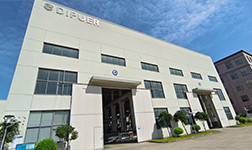News:
Strictly speaking, the internal stress of each roll of material is different, and the process control of each batch of production plates will not be exactly the same. Therefore, the grasp of the material expansion coefficient is based on a large number of experiments, and process control and data statistical analysis are particularly important. Specific to the actual operation, the expansion and contraction of the flexible plate is phased:
First of all, from the opening to the baking plate, the expansion and contraction at this stage is mainly caused by the influence of temperature:
To bake the plate caused by the expansion and contraction stability, first of all to process control consistency, in the premise of material unity, each baking plate heating and cooling operation must be consistent, not because of the blind pursuit of efficiency, and the baked plate in the air for heat dissipation. Only in this way can the expansion and contraction caused by the internal stress of the material be eliminated to a certain extent.
The second stage occurs in the process of pattern transfer, and the expansion and contraction in this stage are mainly caused by the change of stress orientation in the material.
To stabilize the expansion and contraction of the circuit transfer process, all baked boards cannot be ground, and the surface pretreatment is directly carried out by chemical cleaning line. The surface must be flat after pressing film. The standing time of the board before and after exposure must be sufficient. After the circuit transfer is completed, due to the change of stress orientation, the flexible board will present different degrees of curling and contraction. Therefore, the control of circuit film compensation is related to the control of soft and hard combination accuracy. At the same time, the determination of the expansion and contraction value range of the flexible board It is the data basis for producing its matching rigid plate.
The third stage of expansion and contraction occurs in the process of soft and hard plate pressing, which is mainly determined by pressing parameters and material characteristics.
The influence factors of expansion and contraction in this stage include heating rate, pressure parameter setting, residual copper rate and thickness of core plate. Generally speaking, the smaller the residual copper rate, the larger the expansion and contraction value; the thinner the core plate, the larger the expansion and contraction value. However, from large to small, it is a gradual process of change, so film compensation is particularly important. In addition, due to the different nature of flexible and rigid plates, compensation is an additional factor to consider.




 [scan the QR code]
[scan the QR code]

